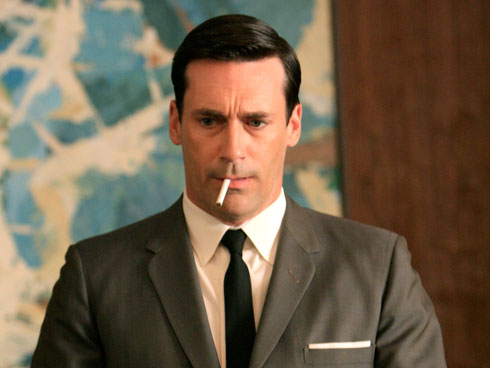Southeastern Grocers = Latest Bankrupt Grocer (Long Amazon/Walmart)
Another day, another bankrupt grocer.
Yesterday, March 27 2018, Southeastern Grocers LLC, the Jacksonville Florida-based parent company of grocery chains like Bi-Lo and Winn-Dixie, filed a prepackaged bankruptcy in the District of Delaware. This filing comes mere weeks after Tops Holding II Corporation, another grocer, filed for bankruptcy in the Southern District of New York. Brutal.
In its filing papers, Southeastern noted that, as part of the chapter 11 filing, it intends to "close 94 underperforming stores," "emerge from this process likely within the next 90 days," and "continue to thrive with 582 successful stores in operation." Just goes to show what you can do when you aren’t burdened by collective bargaining agreements. In contrast to Tops.
Also unlike Tops, this case appears to be fully consensual. It appears that all relevant parties in interest have agreed that the company will (i) de-lever its balance sheet by nearly $600 million in funded liability (subject to increase to a committed $1.125 billion and exclusive of the junior secured debt described below), (ii) cut its annual interest expense by approximately $40 million, and (iii) swap the unsecured noteholders' debt for equity. The private equity sponsor, Lone Star Funds, will see its existing equity interests cancelled but will maintain upside in the form of five-year warrants that, upon exercise, would amount to 5% of the company.
Financially, the company wasn’t a total hot mess. For the year ended December 2017, the company reflected total revenues of approximately $9,875 million and a net loss of $139 million. Presumably the $40 million cut in interest expense and the shedding of the 94 underperforming stores will help the company return to break-even, if not profitability. If not - and, frankly, in this environment, it very well may be a big "if" - we may be seeing this trifecta of professionals (Weil, Evercore, FTI Consulting) administering another Chapter 22. You know: just like A&P. To help avoid this fate, the company has secured favorable in-bankruptcy terms from its largest creditor, C&S Wholesale Grocers, which obviates the need for a DIP credit facility. C&S has also committed to provide post-chapter 11 credit up to $125 million on a junior secured basis.
Other large creditors include Coca-Cola ($KO) and Pepsi-Cola ($PEP). Given, however, that this is a prepackaged chapter 11, they are likely to paid in full. Indeed, a letter sent to suppliers indicates exactly that:
In addition to its over-levered capital structure, the company has a curious explanation for why it ended up in bankruptcy:
"The food retail industry, including within the Company’s market areas in the southeastern United States, is highly competitive. The Company faces stiff competition across multiple market segments, including from local, regional, national, and international supermarket retailers, convenience stores, retail drug chains, national general merchandisers and discount retailers, membership clubs, warehouse stores and “big box” retailers, and independent and specialty grocers. The Company’s in-store delicatessens and prepared food offerings face competition from restaurants and fast food chains. The Company’s primary competitors include Publix Supermarkets, Inc., Walmart, Inc., Food Lion, LLC, Ingles Markets Inc., Kroger Co., and Amazon."
"Adding to this pressure is the recent growth in consumer demand for a “gourmet” shopping experience, complete with offerings of natural, organic, and gluten-free foods. Some of the Debtors’ competitors have expanded aggressively in marketing a range of natural and organic foods, prepared foods, and quality specialty grocery items. The Debtors have been at a disadvantage to companies that have the financial flexibility to devote greater resources to sourcing, promoting, and selling the most in-demand products."
Sound familiar? Here is what Tops said when it filed for bankruptcy:
"The supermarket industry, including within the Company’s market areas in Upstate New York, Northern Pennsylvania, and Vermont, is highly competitive. The Company faces stiff competition across multiple market segments, including from local, regional, national and international supermarket retailers, convenience stores, retail drug chains, national general merchandisers and discount retailers, membership clubs, warehouse stores and “big box” retailers, and independent and specialty grocers. The Company’s in-store delicatessens and prepared food offerings face competition from restaurants and fast food chains. The Company also faces intense competition from online retail giants such as Amazon."
"Adding to this competitive pressure is the recent growth in consumer demand for a “gourmet” shopping experience, complete with offerings of natural, organic, and gluten-free foods. Some of the Debtors’ competitors have expanded aggressively in marketing a range of natural and organic foods, prepared foods, and quality specialty grocery items. The Debtors have been at a competitive disadvantage to companies that have the financial flexibility to devote greater resources to sourcing, promoting, and selling the most in-demand products."
At least Weil is consistent: we wonder whether they pitch clients now on cost efficiencies they derive from just copying and pasting verbiage from one company's papers into another...? We also wonder whether the billable hours spent drafting the First Day Declaration here are less than they were in Tops. What's your guess?
Anyway, there's more. No "First Day Declaration" is complete without a reference to Amazon ($AMZN). Here, though, the company also notes other competitive threats — including Walmart ($WMT). In "Tops, Toys, Amazon & Owning the Robots," we said the following,
In Bentonville, Arkansas some Walmart Inc. ($WMT) employee is sitting there thinking, “Why does Amazon always get the credit and free publicity? WTF.”
Looks like Weil and the company noticed. And Walmart got their (destructive) credit. Go $WMT!
Other causes for the company's chapter 11 include food deflation of approximately 1.3% ("a drastic difference from the twenty-year average of 2.2% inflation"), and reductions in the Supplemental Nutrition Assistance Program (aka food stamps). And Trump wasn’t even in office yet.
Finally, in addition to the store closures, the company proposes to sell 33 stores pursuant to certain lease sale agreements it executed prior to the bankruptcy filing.
Will this mark the end of grocery bankruptcies for the near term or are there others laying in wait? Email us: petition@petition11.com.
























